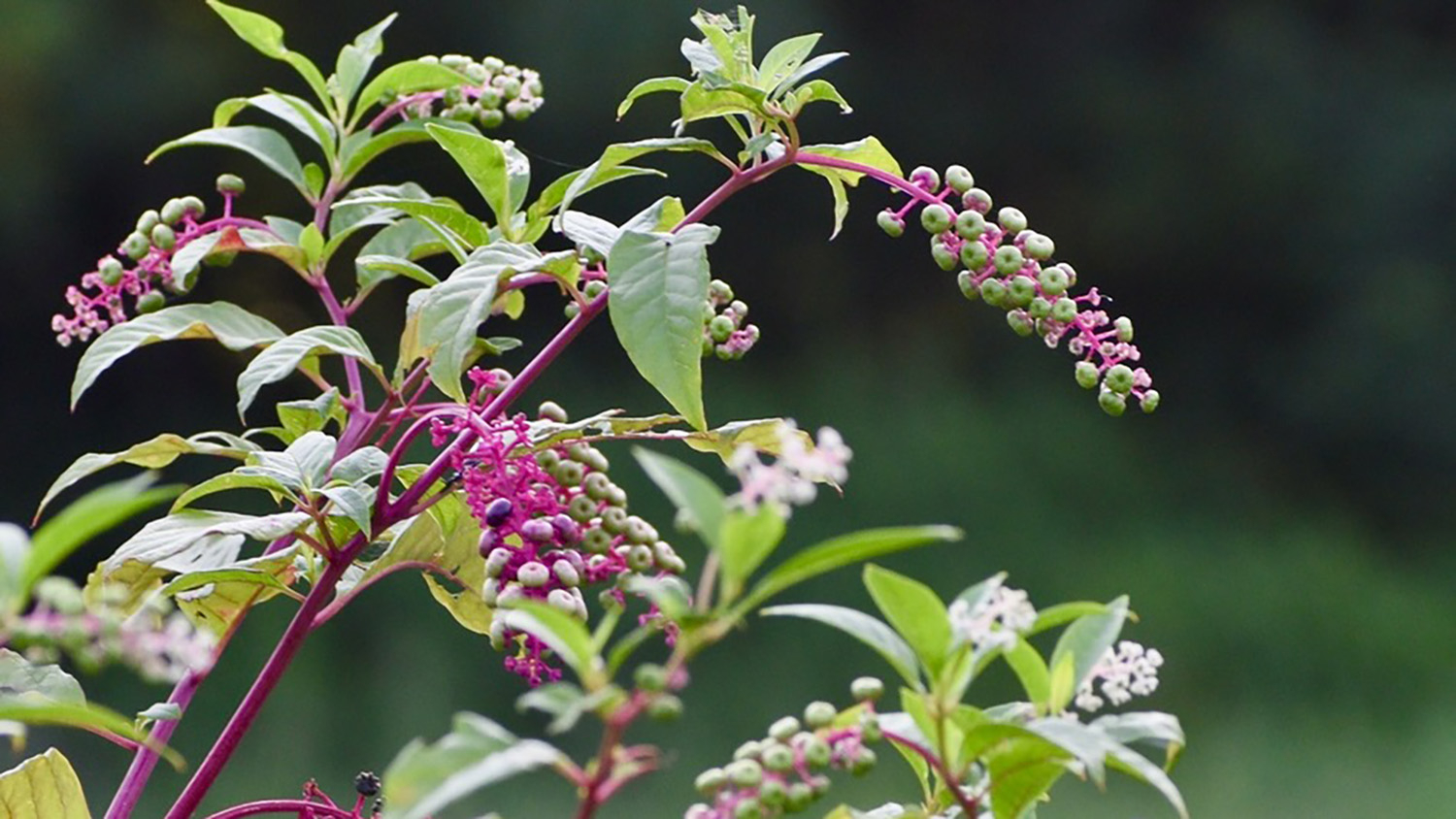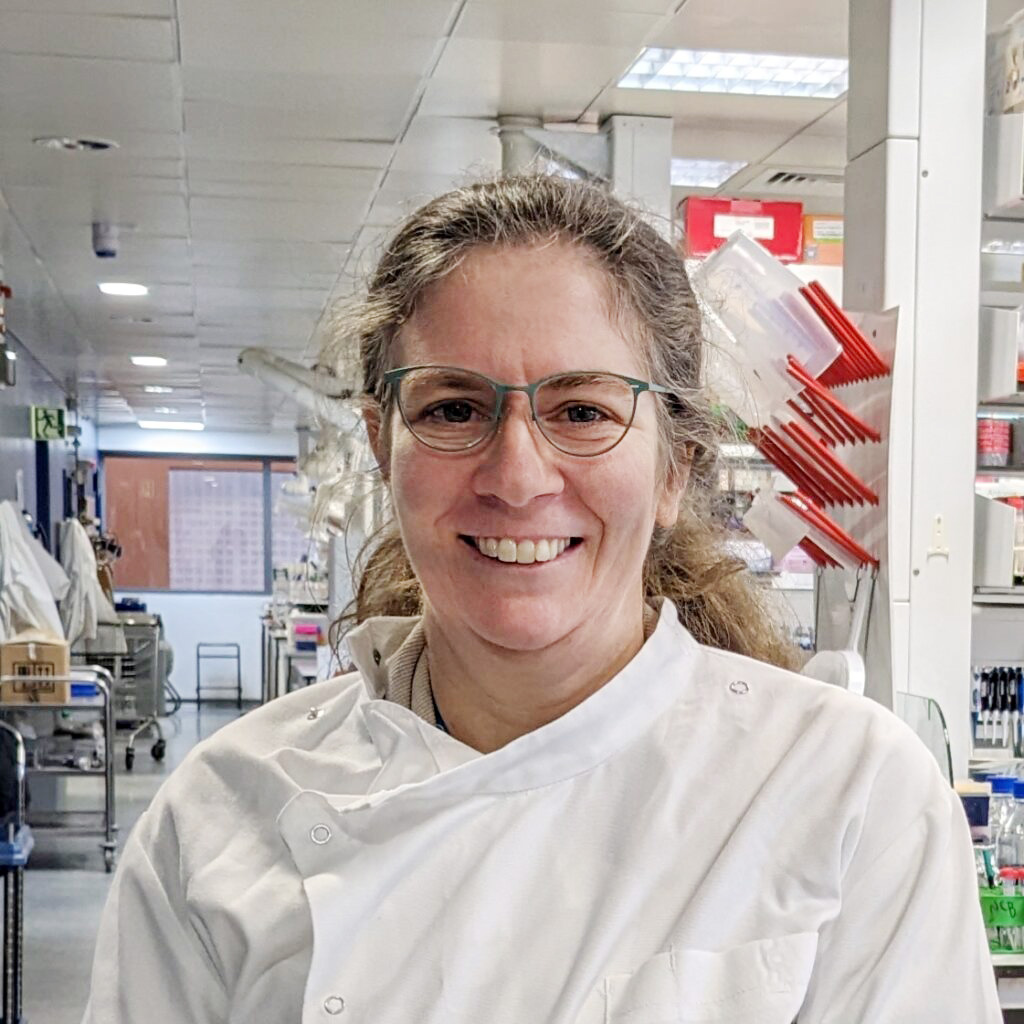Mining the Potential of pokeweed

Plants are land’s sponges in every way imaginable. From absorbing water to cleaning the air, plants play an essential role in keeping the environment on an even keel.
Colleen Doherty, a professor in the Department of Molecular and Structural Biochemistry at NC State University, knows a lot about plants’ amazing properties and sensitivities. She has spent much of her time at NC State exploring how plants interact with the environment, ranging from climate and weather to the time of day.
As she dug into how climate change — everything from warmer winters and springs to warmer nights and hotter days — can impact plants, Doherty realized she wanted to focus her research on how plants can help fight the drivers of climate change.
“I wanted to find a way to try to contribute to the carbon removal from the atmosphere,” Doherty says.
She landed on investigating how plants could help support the electric grid and green economy by extracting rare earth minerals from fly ash and acid mine drainage to aid in powering long-term batteries and other technology.
For the last few years, Doherty has explored how a plant in the Phytolaccaceae family known as pokeweed can help soak up these rare earth minerals. Earlier this year, she investigated the plant’s phytomining power as a Fulbright Visiting Scholar at the Centre for Novel Agricultural Products in the United Kingdom, and she’s partnered with Virginia Tech to see if the poisonous, herbaceous plant can help clean up produced water from fracking.
We caught up with Doherty to learn more about her work with pokeweed, and its future in mining rare earth minerals and helping make our environment a little greener.
How did you land on investigating the phytomining properties of pokeweed?
It turns out that there are actually good sources of rare earth elements in North Carolina, West Virginia and Virginia. Waste streams like coal fly ash and acid mine drainage are enriched with rare earth elements. The U.S. produces enough coal waste every year to meet our current domestic rare earth element needs just from the fly ash. However, these sites can be very geographically dispersed with small sites spread throughout the state.
That sets the stage for a plant-based solution because with plants we don’t have to set up a whole refinery at each location. Plants can be one part of an economic solution to recover rare earth elements. Our goal is to use the demand for rare earth elements to support cleaning up these waste streams.
Why did you choose rare earth minerals?
This work was really driven and inspired by the Defense Advanced Research Projects Agency (DARPA), which develops new technologies for the military. We focused on rare earth minerals because of the potentially unique role of plants in their recovery and their economic importance. Rare earth elements have an essential role in modern technology, including batteries and tech for airplanes to offshore wind systems. DARPA’s support and guidance was what got this project past the initial exploratory phase.
Pokeweed was a natural choice because it has been reported to take in rare earth elements, it’s native to this area, and has been reported to grow in areas that are enriched in coal fly ash. It’s a hardy plant that grows in challenging environments where other plants struggle to grow. And once we tested it, it showed that, yes, absolutely pokeweed can take up rare earth minerals and it can take it up out of these waste streams.

What did your Fulbright research focus on?
With the DARPA project we had shown that we could get these plants to take up lots of rare earth elements. The question then is what do you do next? Aside from trying to figure out how to get the elements out of the plant, we wanted to see if we could get the plants to do the first processing step to turn these metals into needed downstream products. We thought we could investigate having the pokeweed just start that process because as autotrophs, capable of powering themselves from sunlight, if the plants can do any additional processing it can provide an economical and environmental advantage.
I went to work with Liz Rylott at the University of York. She is an expert in plant phytomining and has demonstrated that plants can do the initial processing of precious metals like palladium. The Fulbright opportunity opened the door to a whole new ball game to understand, one, what would be the valuable products and rare earth elements that people would want, and, two, what can the plants do with them? We have so little knowledge of what the plants do with the rare earth element metals that we kind of discovered we have to go back to square one and see a little more basic biology to move that question forward. One of the things we ended up doing was looking more at the intersection between microbes and plants on the uptake. We are still working together to identify candidate genes in pokeweed that could help us understand the biology of rare earth elements and how plants take up these metals.
And your research with Virginia Tech will explore how plants, such as pokeweed, can help clean up water produced through fracking?
Virginia Tech professors are leading a project where they’re purifying the produced water from fracking before it either goes back into the ground or is used for irrigation. Right now, you can’t irrigate crops with this water because of contaminants in the water and the high salt levels. What’s neat about the Virginia Tech project is it’s a combination of bio-based and engineered systems to clean up the water. So it’s marrying those two together where you’ve got this hybrid system that’s using the best of biology, such as plants like pokeweed, and the best of engineering to get the water clean.
How could that project lead to the development of a cleaner method to extract the rare earth minerals from pokeweed?
That’s what started the collaboration with Virginia Tech. We reached out to talk about cleaner ways to get the minerals from the pokeweed. The current way to get them out is to just burn them, which defeats the point of trying to be carbon-negative or at the very least carbon-neutral. So if we’re just ashing them, that’s not optimal. We want to try and do it better. Plus the plants have a lot of valuable things like nitrogen phosphate. Some of them have potentially valuable compounds that we could co-extract. And Wencai Zhang at Virginia Tech is working on extraction methods to try to recover the rare earth elements in a carbon-friendly manner while also recovering other compounds, such as phosphate or nitrogen, for fertilizers.
In the meantime, what are the next steps for your work with pokeweed at NC State?
So right now, one of the big things we have done here in collaboration with Mike Kudenov in the College of Engineering is to develop the ability to detect the rare earth elements so we can see them in the plants. And so going back to that point that we need better basic biology of what’s going on, one of the questions is where are the elements going in the plants and does the environment affect where they’re going? Does the time of day matter? Are these having an effect on where they’re going in the plant at a tissue level, like leaf versus stem? Also, at the subcellular level, are they going in the nucleus or the vacuole? Dr. Kudenov is developing instruments and techniques that are really helping us answer these basic but essential questions. And that goes back to helping us understand what’s going on with the basic biology.
Another main focus in my lab right now is trying to zero in on these plants that have really high rare element uptake and looking at if we could try to optimize the uptake of pokeweed itself.
This post was originally published in College of Agriculture and Life Sciences News.